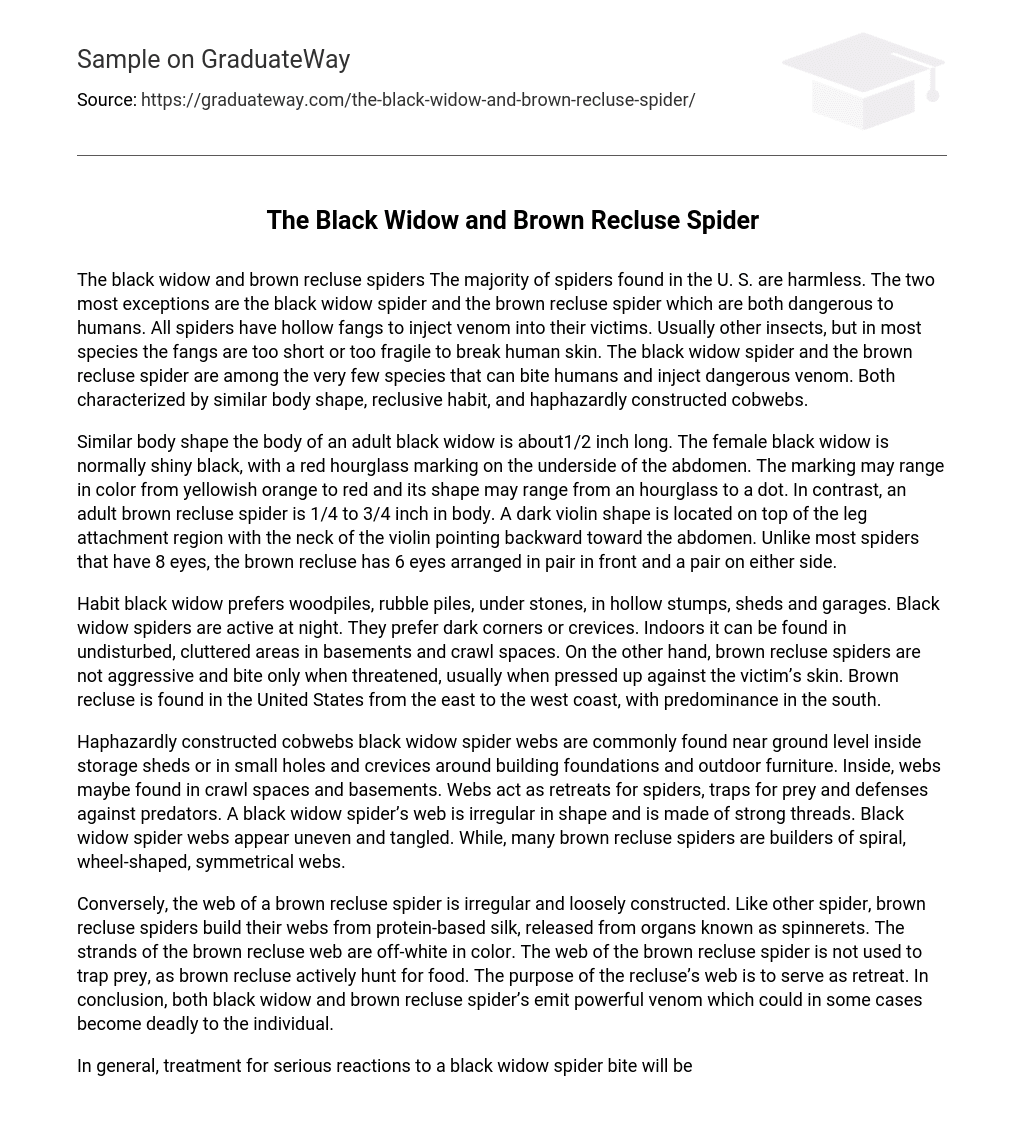The black widow and brown recluse spiders The majority of spiders found in the U. S. are harmless. The two most exceptions are the black widow spider and the brown recluse spider which are both dangerous to humans. All spiders have hollow fangs to inject venom into their victims. Usually other insects, but in most species the fangs are too short or too fragile to break human skin. The black widow spider and the brown recluse spider are among the very few species that can bite humans and inject dangerous venom. Both characterized by similar body shape, reclusive habit, and haphazardly constructed cobwebs.
Similar body shape the body of an adult black widow is about1/2 inch long. The female black widow is normally shiny black, with a red hourglass marking on the underside of the abdomen. The marking may range in color from yellowish orange to red and its shape may range from an hourglass to a dot. In contrast, an adult brown recluse spider is 1/4 to 3/4 inch in body. A dark violin shape is located on top of the leg attachment region with the neck of the violin pointing backward toward the abdomen. Unlike most spiders that have 8 eyes, the brown recluse has 6 eyes arranged in pair in front and a pair on either side.
Habit black widow prefers woodpiles, rubble piles, under stones, in hollow stumps, sheds and garages. Black widow spiders are active at night. They prefer dark corners or crevices. Indoors it can be found in undisturbed, cluttered areas in basements and crawl spaces. On the other hand, brown recluse spiders are not aggressive and bite only when threatened, usually when pressed up against the victim’s skin. Brown recluse is found in the United States from the east to the west coast, with predominance in the south.
Haphazardly constructed cobwebs black widow spider webs are commonly found near ground level inside storage sheds or in small holes and crevices around building foundations and outdoor furniture. Inside, webs maybe found in crawl spaces and basements. Webs act as retreats for spiders, traps for prey and defenses against predators. A black widow spider’s web is irregular in shape and is made of strong threads. Black widow spider webs appear uneven and tangled. While, many brown recluse spiders are builders of spiral, wheel-shaped, symmetrical webs.
Conversely, the web of a brown recluse spider is irregular and loosely constructed. Like other spider, brown recluse spiders build their webs from protein-based silk, released from organs known as spinnerets. The strands of the brown recluse web are off-white in color. The web of the brown recluse spider is not used to trap prey, as brown recluse actively hunt for food. The purpose of the recluse’s web is to serve as retreat. In conclusion, both black widow and brown recluse spider’s emit powerful venom which could in some cases become deadly to the individual.
In general, treatment for serious reactions to a black widow spider bite will be beyond the scope of most medical offices and urgent care centers. The brown recluse takes the match in severe cases capable of causing blistering blue discoloration, ultimately leading to destructive necrotic lesions with deep wide borders and scarring. The first symptom is acute pain at the site of the bite, although there may only be a minimal local reaction. Ultimately, be cautious of both spider’s and seek medical care if bitten.





